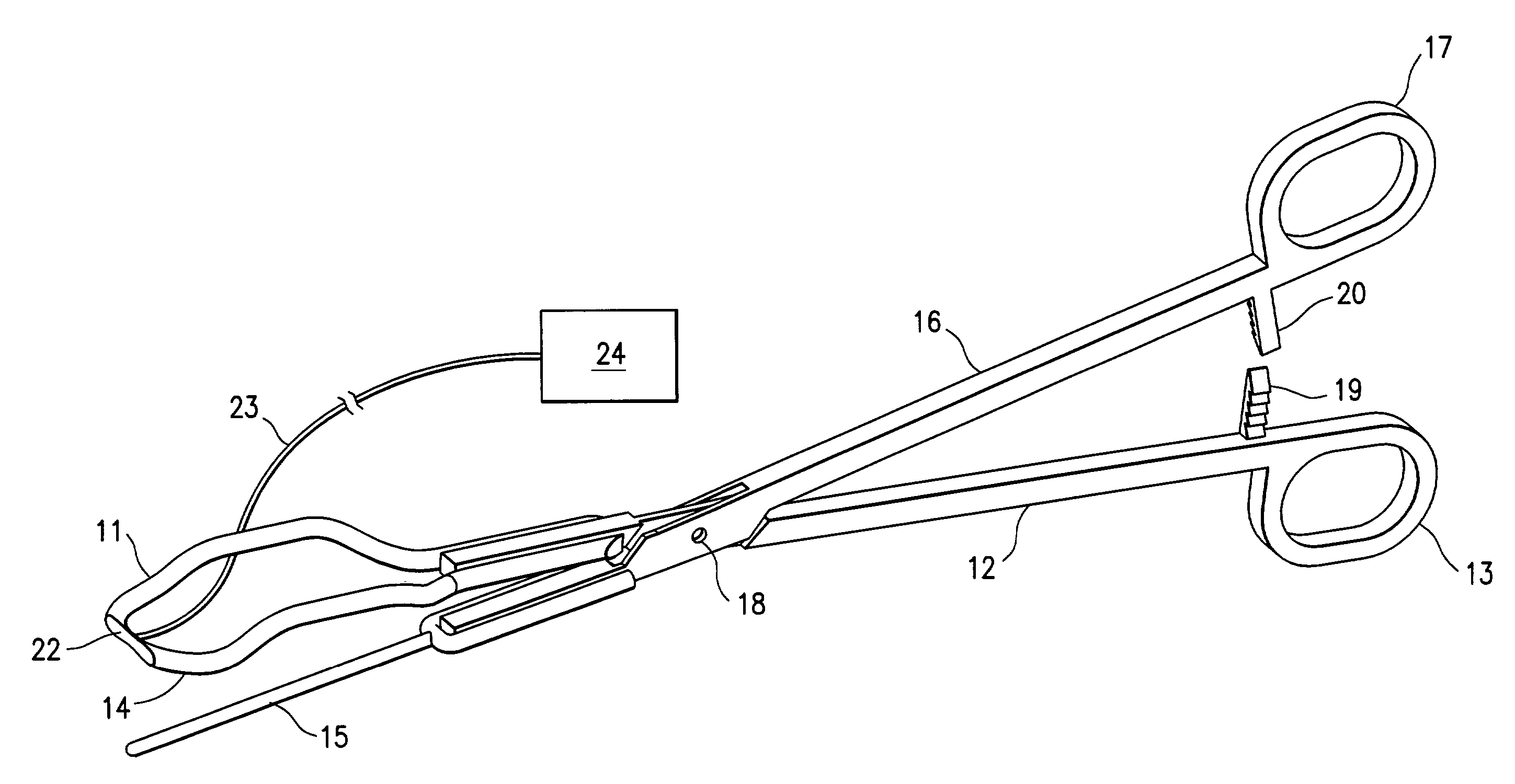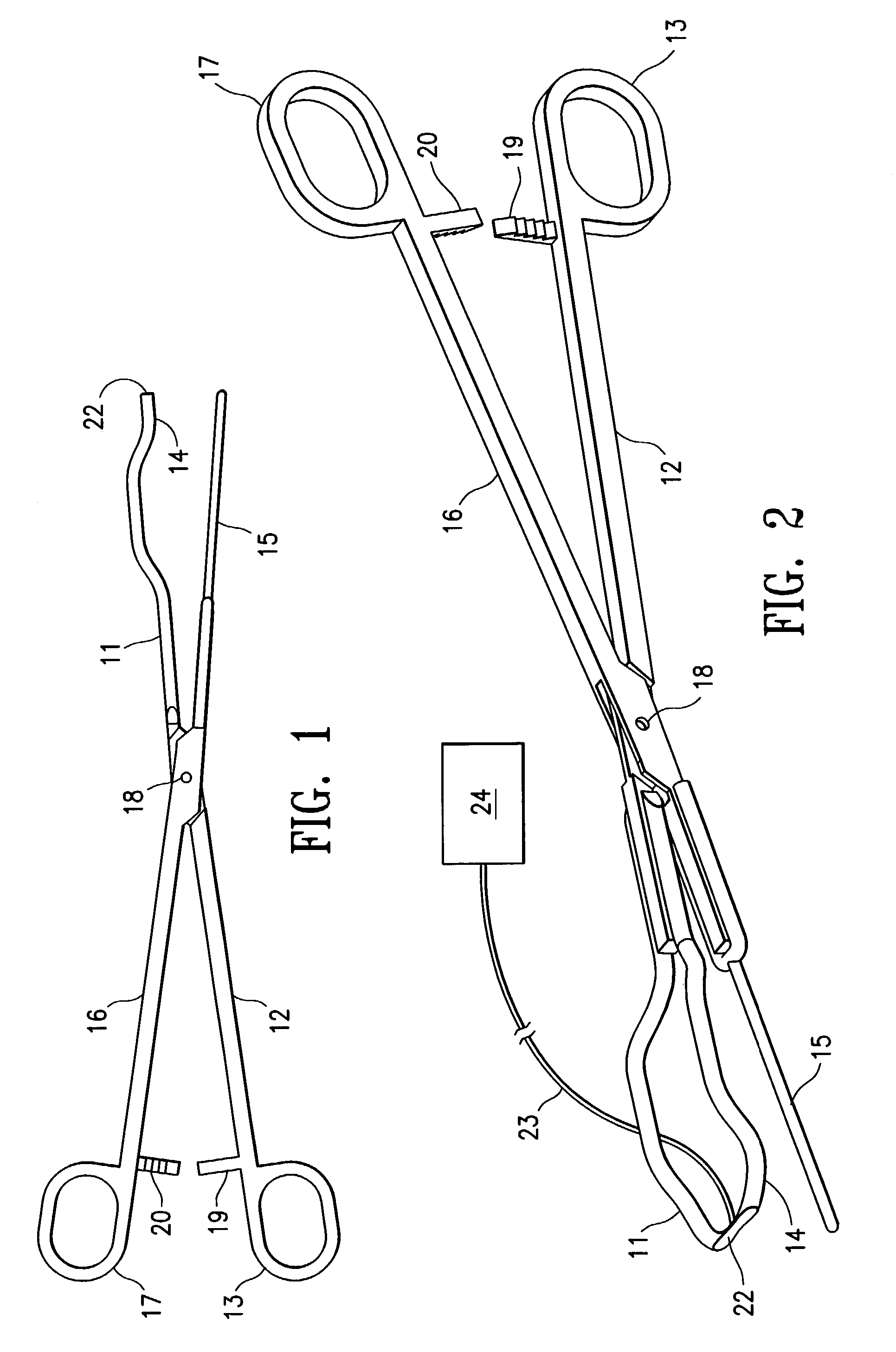Uterine artery occlusion clamp
a uterine artery and occlusion technology, applied in the field of uterine disorders, can solve the problems of not having the training or equipment necessary to perform catheter-based uterine artery embolization, not always allowing for accurate placement of the clamping surface, etc., and achieve the effect of reducing or terminating blood flow
- Summary
- Abstract
- Description
- Claims
- Application Information
AI Technical Summary
Benefits of technology
Problems solved by technology
Method used
Image
Examples
Embodiment Construction
[0029]FIGS. 1 and 2 show a relatively non-invasive intra-uterine occluding clamp 10 embodying features of the invention. The clamp 10 includes a clamping member 11 having an elongated handle 12 with a finger grip 13, and pressure-applying clamping element or jaw 14 on the distal end of the clamping element. The intra-uterine clamp also includes stabilizing member 15 which is configured to readily follow or track the patient's cervical os and cervical canal. The stabilizing member 15 has an elongated handle 16 with a finger grip 17. The clamping member 11 and stabilizing member 15 are pivotally connected to each other at pivot point 18 and rotation of handles 12 and 16, preferably by fingers of an operator's hand engaged through grips 13 and 17 respectively, adjust the spacing between the jaw 14 and the distal portion of stabilizing member 15. Each of the handles 12 and 16 are provided with a ratchet member 19 and 20 respectively which interact to lock the relative positions of the c...
PUM
 Login to View More
Login to View More Abstract
Description
Claims
Application Information
 Login to View More
Login to View More - R&D
- Intellectual Property
- Life Sciences
- Materials
- Tech Scout
- Unparalleled Data Quality
- Higher Quality Content
- 60% Fewer Hallucinations
Browse by: Latest US Patents, China's latest patents, Technical Efficacy Thesaurus, Application Domain, Technology Topic, Popular Technical Reports.
© 2025 PatSnap. All rights reserved.Legal|Privacy policy|Modern Slavery Act Transparency Statement|Sitemap|About US| Contact US: help@patsnap.com



